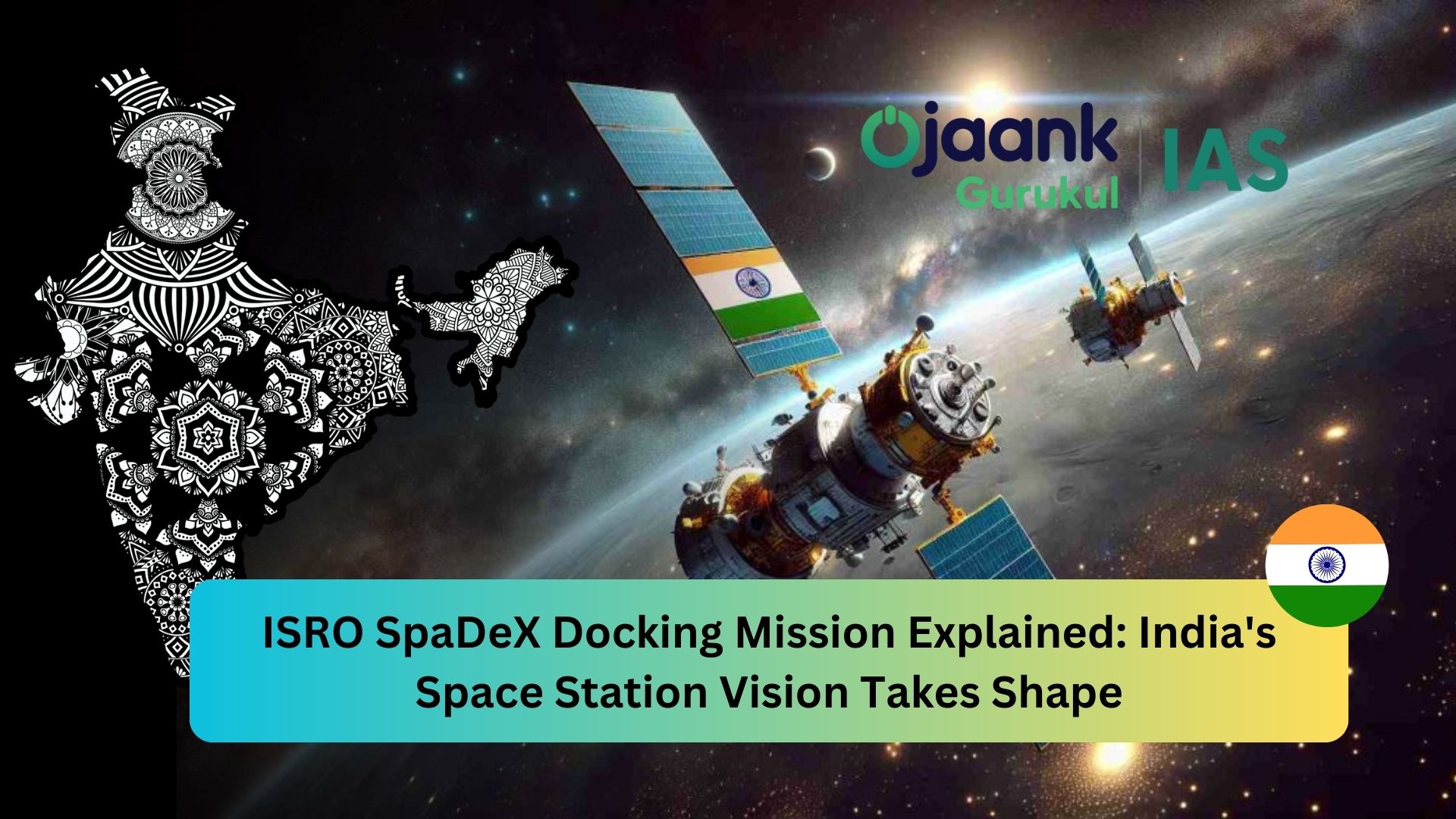ISRO SpaDeX Docking Mission Explained: India's Space Station Vision Takes Shape

India's space exploration capabilities reached a remarkable milestone on January 16, 2025, when the Indian Space Research Organisation (ISRO) successfully conducted its SpaDeX (Space Docking Experiment) mission.
This achievement positions India among an elite group of nations—joining the United States, Russia, and China—with advanced space docking technology. But the implications of this success go far beyond joining the global space elite.
What is Space Docking?
Space docking refers to the highly complex process of maneuvering two fast-moving spacecraft in orbit to come into contact, connect, and operate as one unit. This capability is pivotal for future missions involving:
- Setting up space stations: Joining multiple modules in orbit.
- Lunar and interplanetary missions: Assembling heavy spacecraft that exceed the lift capacity of a single launch vehicle.
- Resupply and crew transfer: Essential for sustaining life and operations aboard space stations.
Highlights of ISRO's SpaDeX Mission
The SpaDeX experiment involved two 220-kg satellites named SDX01 (Chaser) and SDX02 (Target). Here’s how ISRO executed the mission:
-
Step-by-Step Approach:
- The satellites were maneuvered to progressively closer positions: 5 km, 1.5 km, 500 m, 225 m, 15 m, and finally, 3 m apart.
- Using advanced sensors like Laser Range Finder and Rendezvous Sensors, the satellites were aligned and connected.
-
Docking Mechanism:
- An androgynous docking system was used, meaning both satellites had identical docking interfaces.
- ISRO opted for a design with just two motors for efficiency, compared to the 24-motor International Docking System Standard (IDSS).
-
Command Integration:
- Post-docking, commands were issued to the two satellites as a single composite unit, a critical step for future autonomous missions.
-
Post-Docking Operations:
- The next phases involve sharing electrical power between the satellites and undocking to test separation mechanisms.
Why Does This Achievement Matter?
India’s Future Space Ambitions
ISRO has ambitious plans for the coming decades, including:
-
Bharatiya Antariksh Station (Indian Space Station):
- A modular space station with five key robotic modules, the first of which is scheduled for launch by 2028.
- Docking technology will enable the seamless assembly of these modules in orbit.
-
Chandrayaan-4 Lunar Mission:
- A lunar sample return mission requiring docking capabilities for transferring samples from the Moon to Earth orbit.
-
Human Spaceflight to the Moon by 2040:
- Future manned lunar missions will use docking to assemble and refuel spacecraft in orbit.
Boost to India's Space Economy
- Advanced docking systems pave the way for private players in India's burgeoning space industry to develop and deploy modular satellites.
- Collaboration opportunities with international space agencies increase, positioning India as a key player in global space exploration.
Scientific Advancements
- The mission tested sensors and processors designed for autonomous docking, reducing reliance on satellite-based navigation and enabling fully independent missions in the future.
Historical Context of Space Docking
India’s SpaDeX success follows decades of advancements in space docking:
- United States:
- NASA’s Gemini VIII mission (1966) was the first to dock in space, piloted by Neil Armstrong.
- Soviet Union:
- Achieved the first automated docking in 1967 with Kosmos 186 and 188.
- China:
- Demonstrated docking capabilities in 2011 and conducted crewed docking missions in 2012.
Challenges and Lessons Learned
The road to success wasn’t without challenges. Early docking attempts in January 2025 faced setbacks, with satellites drifting apart due to miscalculations. However, ISRO’s resilience and adaptive strategies, including additional simulations, ensured the mission's eventual success. This highlights the importance of iterative testing in space exploration.
Looking Ahead: The Bharatiya Docking System
ISRO’s docking mechanism stands out for its efficiency and simplicity. Innovations like reduced motor dependency and advanced sensor integration mark a significant step toward autonomy in space missions.
This system will play a crucial role in India’s future endeavors, including the assembly of space stations and interplanetary missions.
Conclusion
The successful SpaDeX docking mission is not just a technological achievement—it’s a testament to India’s growing prowess in space exploration. By mastering docking capabilities,
ISRO has opened doors to ambitious projects like the Bharatiya Antariksh Station and lunar exploration missions. This milestone underscores India’s commitment to becoming a leader in space technology and exploration, inspiring the next generation of scientists--- and engineers.
India's space journey is soaring to new heights, and the world is watching. With a clear vision and proven capability, ISRO is charting the path to a future where space is not the final frontier, but the next chapter.
Read More: